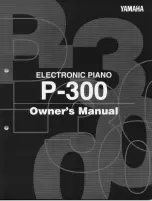
8
V
V
C
C
F
F
VOLTAGE CONTROLLED FILTER
The VCF in SPAWN is a low pass 24dB/oct transistor
ladder filter. It has the ability to attenuate/eliminate
frequencies above the cut off frequency point. This type
of filter is associated with the classic American ‘FAT’
analogue sound.
The Frequency knob (full name cut-off frequency) controls the point at which attenuation begins. Frequencies
above the cut-off frequency point are attenuated at 24dB/oct.
The Resonance knob is used to accentuate frequencies around the cut-off point, as the resonances increases the
filter will begin to ring and will self oscillate at high resonate settings producing a sinewave (the frequency of
which is controlled by the cut-off knob).







































